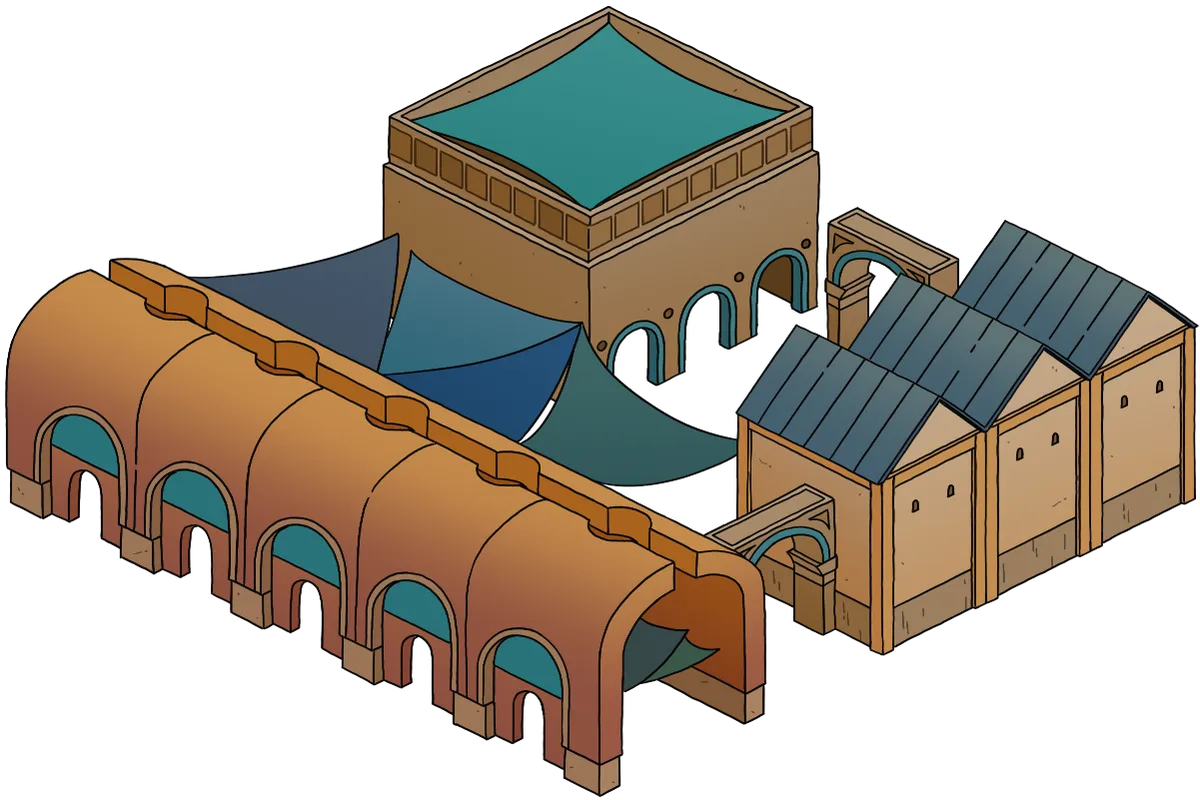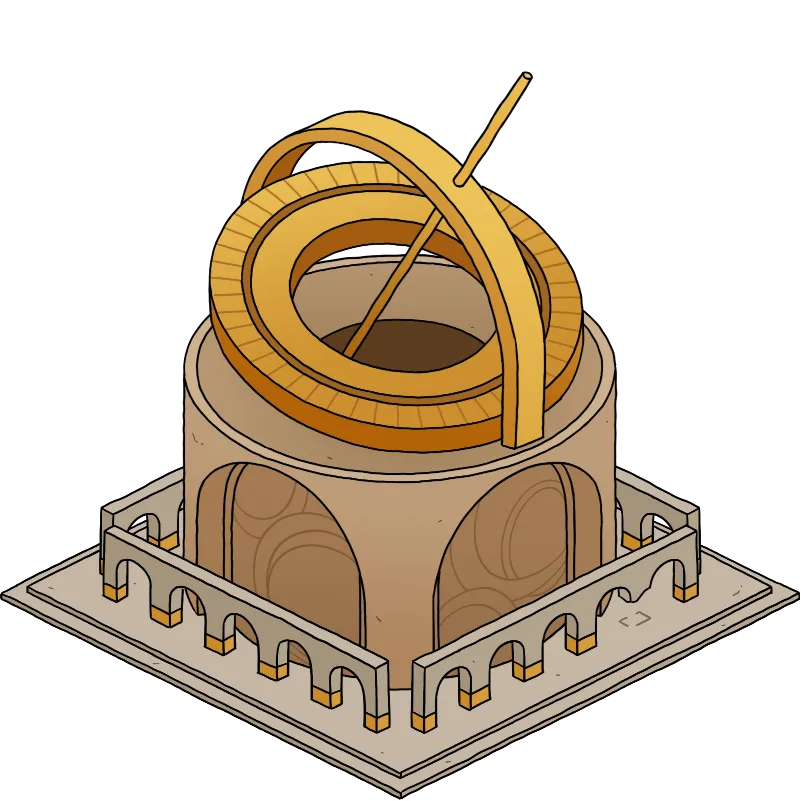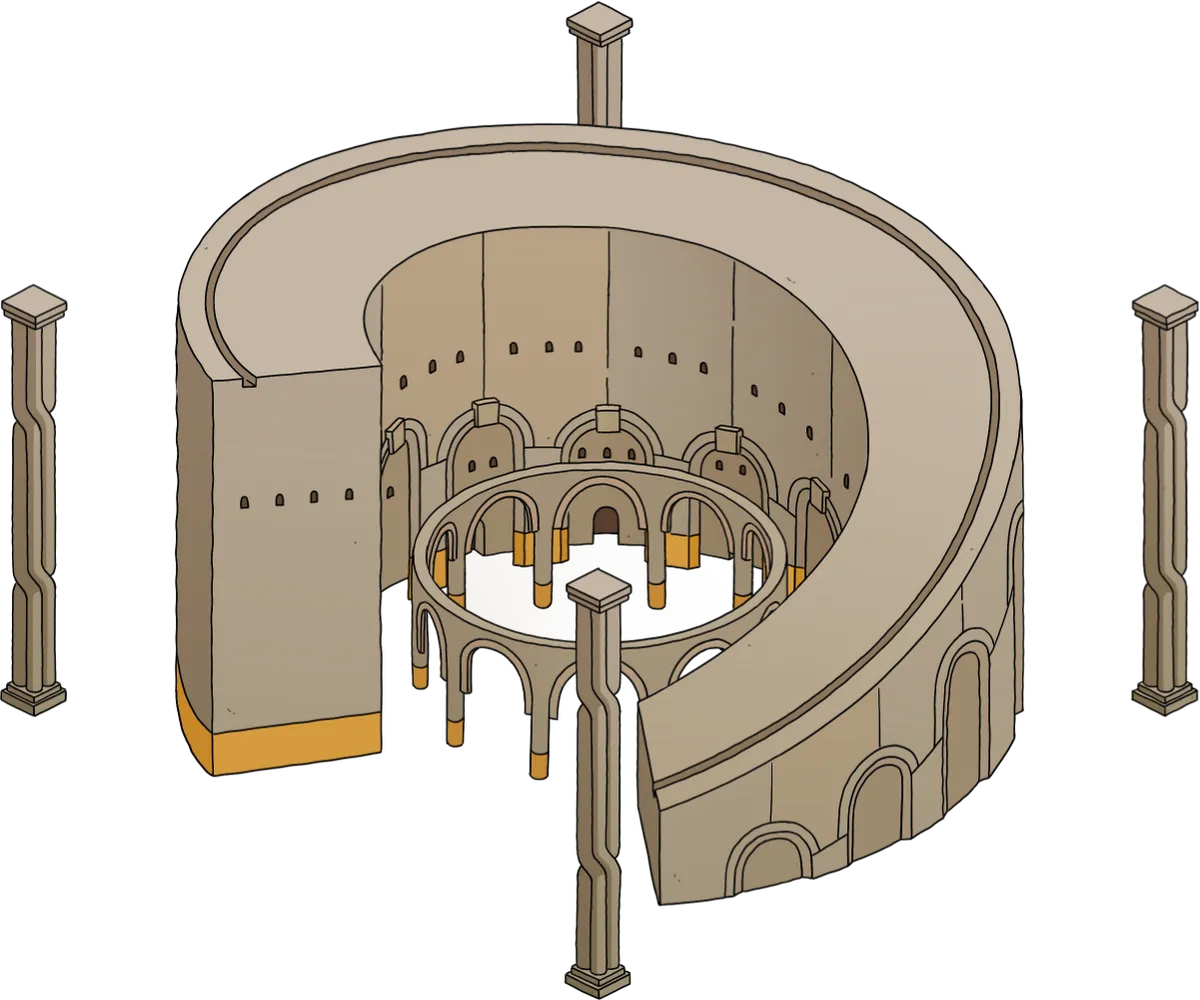2D Cities, Detail and Theme
Amberspire design diary #6 - see the other design diaries, wishlist the game, or subscribe to our newsletter. Production on the game has started! While I was getting the basics of dice and buildings put together, the first big decision was to render the whole in 2D. This design diary goes into the reasoning behind that decision.
The first production decision made for Amberspire was choosing to render the game in 2D or 3D. By training and experience I am a 3D artist and comfortable with 3D games, so this seemed like a natural starting point. Once I actually got started on the prototype however, we decided to do the exact opposite: go full 2D and isometric.
 Bazaar
Bazaar
The Details
Cities are dense and detailed environments, and producing detailed 3D art is a lot of work. You need to conceptualize and model walls, roofs, windows props, domes, arches, tunnels, plants, – everything you want to see. Then unwrap and texture all those objects, before creating shaders for all the materials to render them. I have experience doing all of these things, but our goal was to keep the team size and production close to The Banished Vault - which had comparatively few small and simple models. Amberspire would need a few dozen unique buildings, all detailed and intricate.
All this to say 2D art is not by any means easy, but it does have many fewer steps. It solves a lot of production problems all at once: once an artist draws the image, it just has to be placed on screen.
More subtly, however, is an expected level of detail when comparing 2D and 3D. I did not want the city to feel like it was being represented abstractly, like buildings in The Banished Vault. With a space fantasy setting, specific details are important to communicate the setting and world to the player. My worry would be that with a setting so unusual that alienates the player a bit, art that is further removed from the 'accurate' depiction of the setting would be hard to understand and engage with.
One small bonus here as well: 2D art is more iconic. Everything in a game is an interface the player, and which building is which is an important piece of information for the player. Making a 3D building recognizable is doable, but just that extra step harder than in 2D.
 Clockworks
Clockworks
The Style
The science fantasy mode that Amberspire is in is communicated through the art, and it looks best in 2D. Hand drawn, irregular, illogical, equally playful and sinister – I could go on. When our artist Yue started on the project one of the first things I said to her was “don’t worry about making the buildings perfectly logical”.
There is a je ne sais quoi to 3D art that implies some kind of underlying logic. To make a closed shape, vertices have to be connected in a mathematical space and be rendered by the engine. Of course you can make illogical 3D art, but that comes with other tradeoffs.
In Amberspire, the buildings are fully realized. They explain exactly as much of themselves as Yue and I want them to. The setting overall has many magical and fundamentally impossible aspects, and the art style and rendering are vital in communicating that.
 Temple
Temple